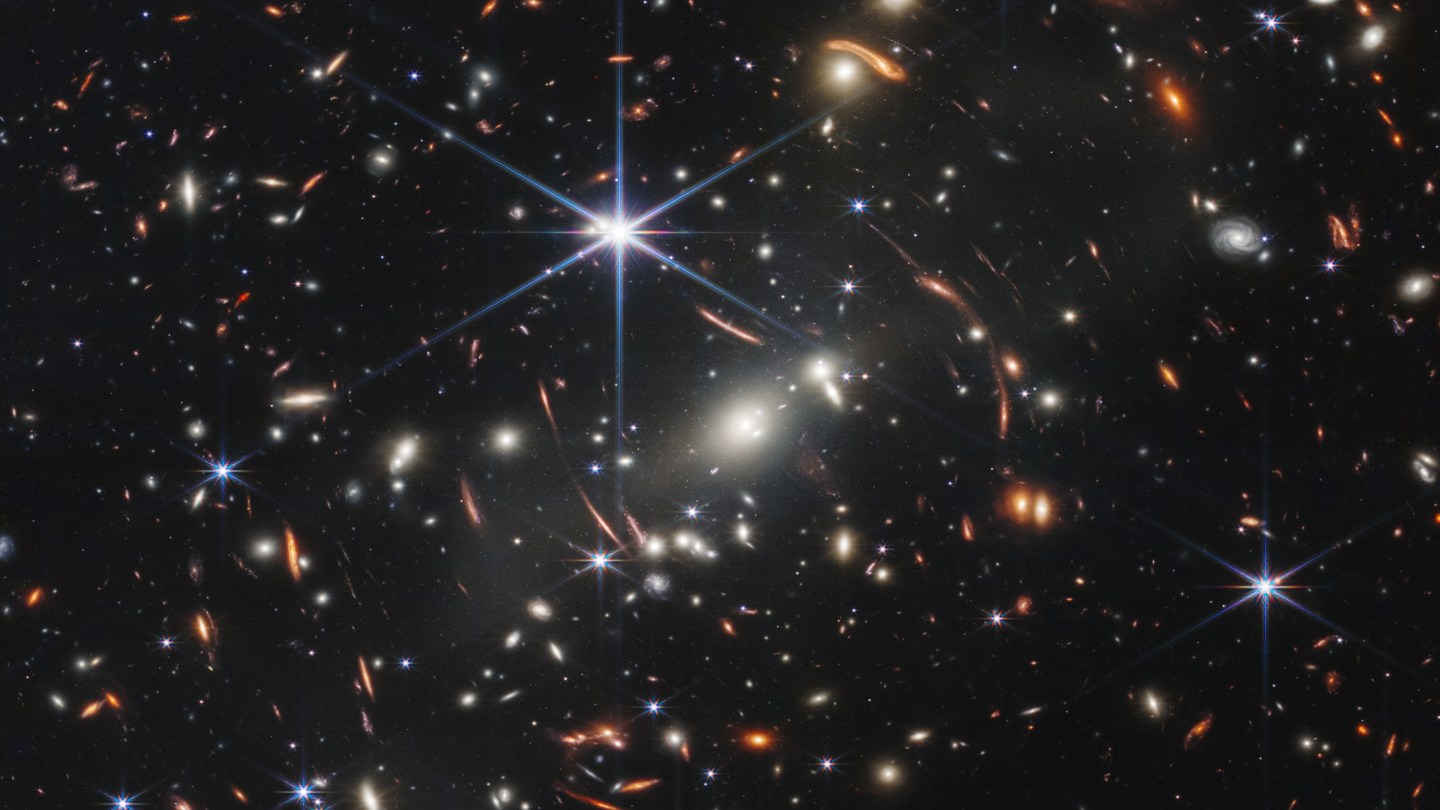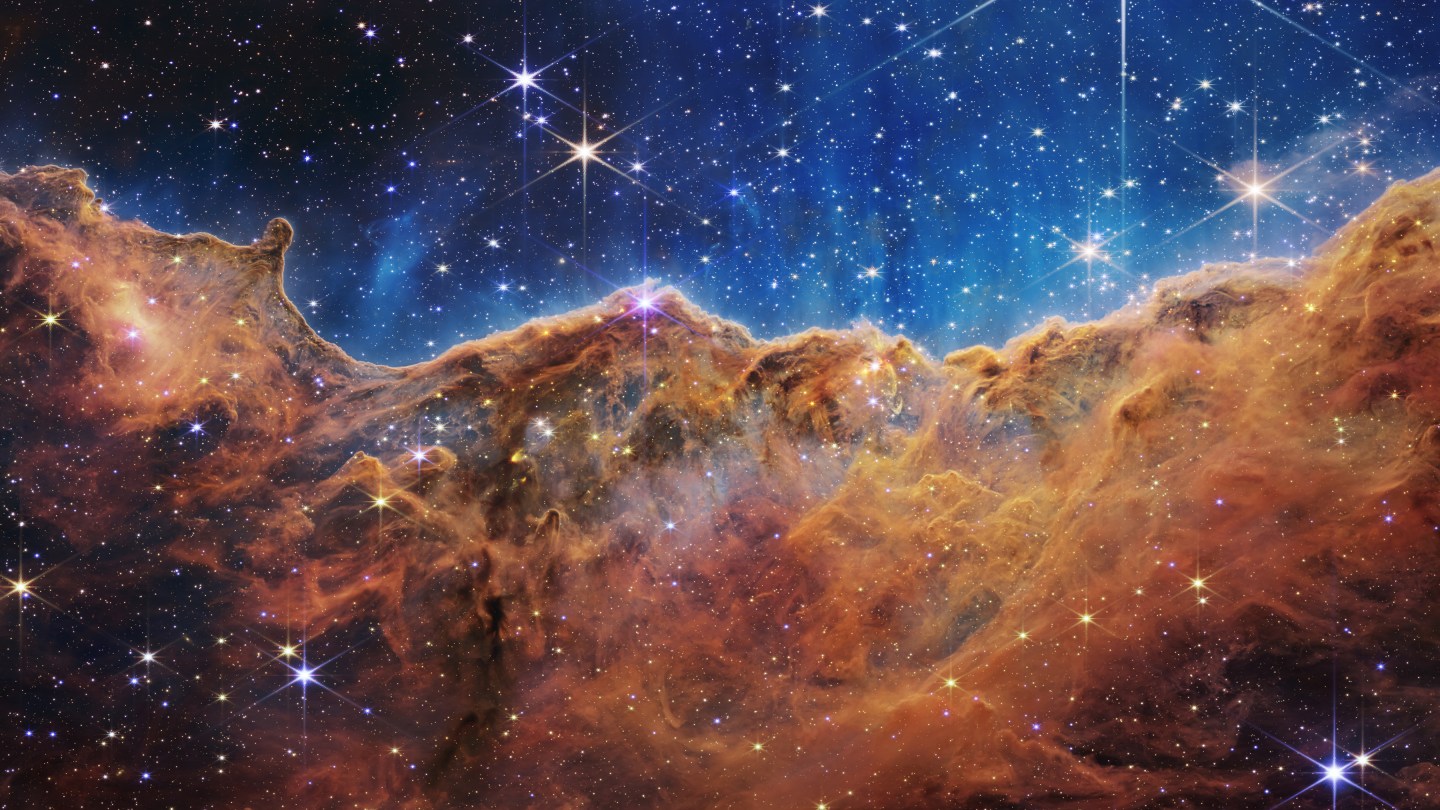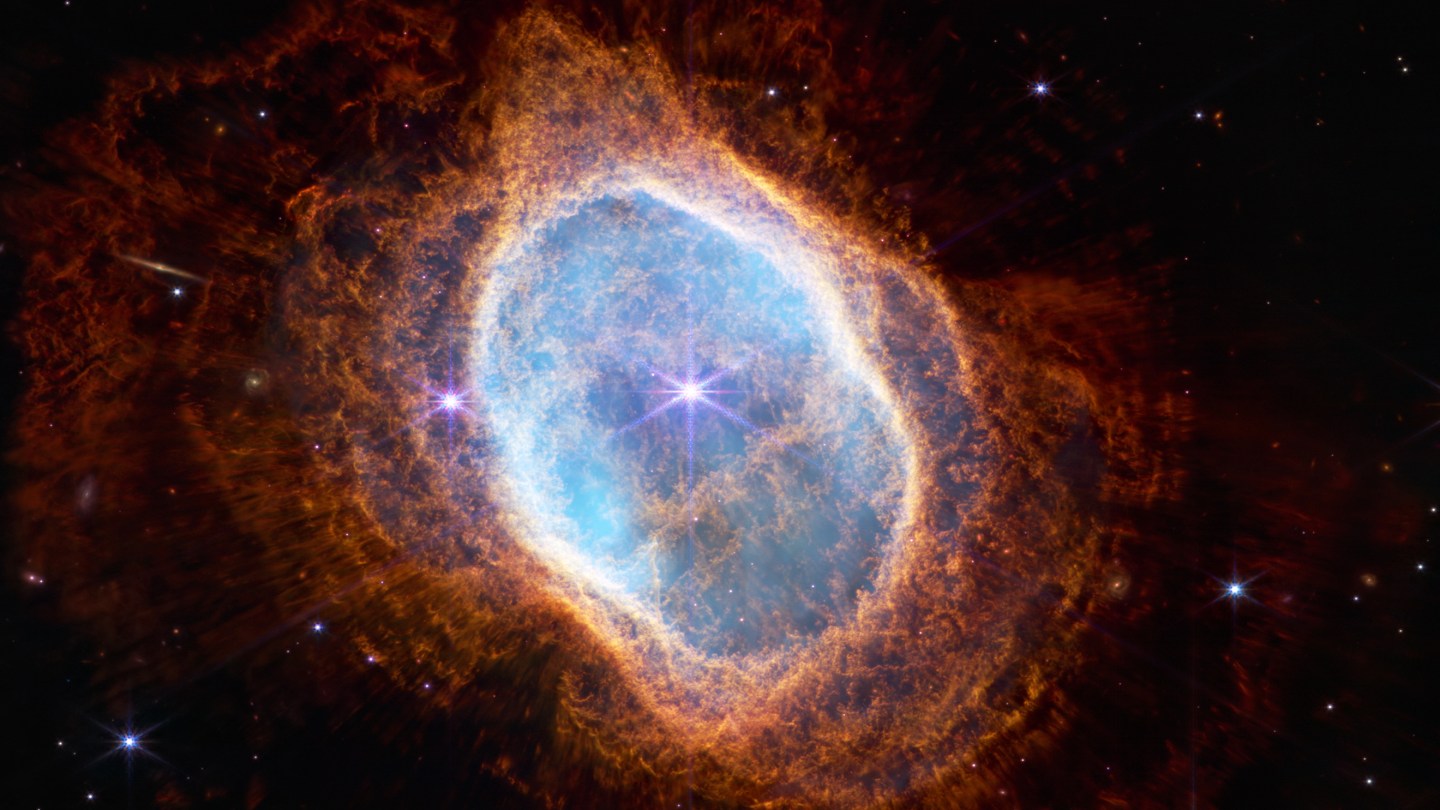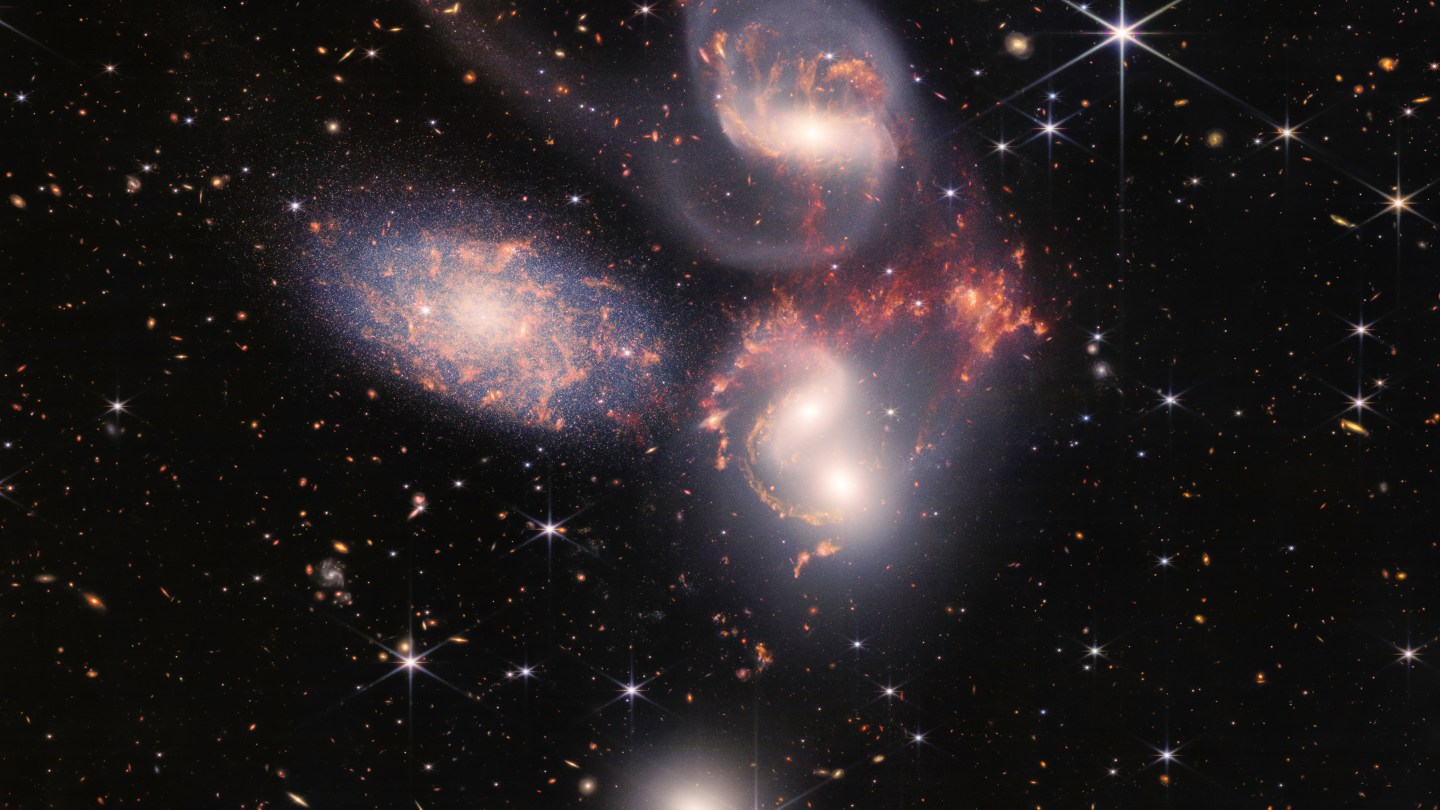Rays of infrared light escaped a newly formed galaxy some 13,100,000,000 years ago. The universe was young, gravity still bringing the stars and gases together, the heavier atoms not yet forged in abundance—but there was plenty of hydrogen to become helium, and fusion was already at work. The young stars in this young galaxy were underway, sending out light across the spectrum, and to every cranny of this younger, smaller universe. They were emitted in all directions, so there's nothing special about this one particular stream of photons. But stream it did, across the chasms of space, encountering, for most of its journey, mostly nothing.
But mostly nothing is not nothing. The voids are unfathomable, but the law of large numbers is not. Every once in a while—every 10 million or 50 million years, say—the light from that primeval galaxy passed near ("near" on a galactic scale, anyway) some other galaxy. Some of these other galaxies were still being born; some were already being torn apart; many were in the prime of their lives. All of them were nearer and younger, by the point of reference of some theoretical point along the direction of propagation of those rays. Each of these galaxies gave off their own infrared radiation, again in all directions, which means that some of their light was sent on the same general path as the rays from the elder galaxy. These streams of photons traveled, not together, but more or less parallel. They were headed toward nothing in particular.
Some time passed.
Then, about 4.6 billion years ago, these rays passed near a cluster of galaxies that some future lifeform would call, for convenience's sake, SMAC 0723. This cluster was large, and heavy. So heavy, in fact, that its gravity would act on the photons as they raced by; even traveling at 186,000 miles per second ("miles" and "second" both being measures that would similarly be created by that future lifeform to help quantify the universe) was not fast enough to avoid the relentless tug of gravity. So the light was pulled in toward the galaxy, changing its course. But it was still too fast and too distant from SMAC 0723 to be belayed; it continued on through the dark, its path now describing not a line but an arc.
Its new destination was still pretty unpromising: a nebulous cloud of gases on an inner arm of an unremarkable spiral galaxy which that future lifeform, in a burst of creativity by comparison with the nomenclature that produced "SMAC 0723," would call the Milky Way, among other things. But 4.6 billion years is a long time; maybe by the time the light arrived, there would be something there.
And so, in due time, the light arrived. By now it was many photon streams, some thousands upon thousands points of light from each of thousands of galaxies, each of those separated from the others by millions or billions of years and light-years. But their light was together. And that light converged on a certain point. The location of this point was one million miles from an unremarkable blue planet orbiting an unremarkable main-sequence star. The size of this particular patch was roughly a grain of sand of that nearby planet as seen from about a yard away. And the light struck something there, and went no farther. And this was the light:

That microscopic field of light, containing nearly the history of the universe, is Webb’s First Deep Field, the first image released from the James Webb Space Telescope. It is the first of many images the telescope will produce, but you never forget your first. Your first forgets you, though: Cold and beautiful, empty and teeming, that patch of sky is a snapshot of time travel through the vastness of a universe that has room for everything and favor for nothing. We—you, me, us, this—we don't matter.
This knowledge, to me, inspires two feelings, diametrically opposed but somehow not in conflict with each other. The first feeling is—well, the word doesn't exist, because the words were created by a primitive featherless biped who had no conception of the true scale of things, or their place in it. But some words come close to the thing. Awe? Terror? Love? God?
How about: understanding. The understanding that our existence is a cosmic rounding error and that nothing we can say or do can ever count in a universe too immense for counting. If we disappeared tomorrow, or had never appeared at all, it would go unnoticed. I find this depressing and heartening. All our joys and accomplishments, functionally meaningless; but so too are our pains and regrets and very human cruelties. A tiny patch of our sky contains more (and no doubt more life) than we can come close to comprehending. Why even try?
Well, because we can. That's the second feeling the JWST's images evoke in me: something quite like pride. If there is no meaning in things, there is still order. And that order is not unknowable.
We, that future lifeform, those primitive featherless bipeds, built and launched an improbably complex piece of machinery to a gravitationally stable point in space, to take pictures on a wavelength our eye cannot see, and send them back to us in a form that we can. We did this! We invented (or rather came to understand) the engineering and physics required to do this, and the social cohesion required to make it practical, and the philosophy required to interpret it; nothing else crawling or swimming around this blue planet has even come close. Through accidents of chemistry we exist, and through vagaries of evolution we arrived at a moment when we could learn a little more about the universe that would happily ignore us. We did not know things; now we know some things. There is victory in that, even when the prize is humility. In seeing and grasping our insignificance, we create meaning.









